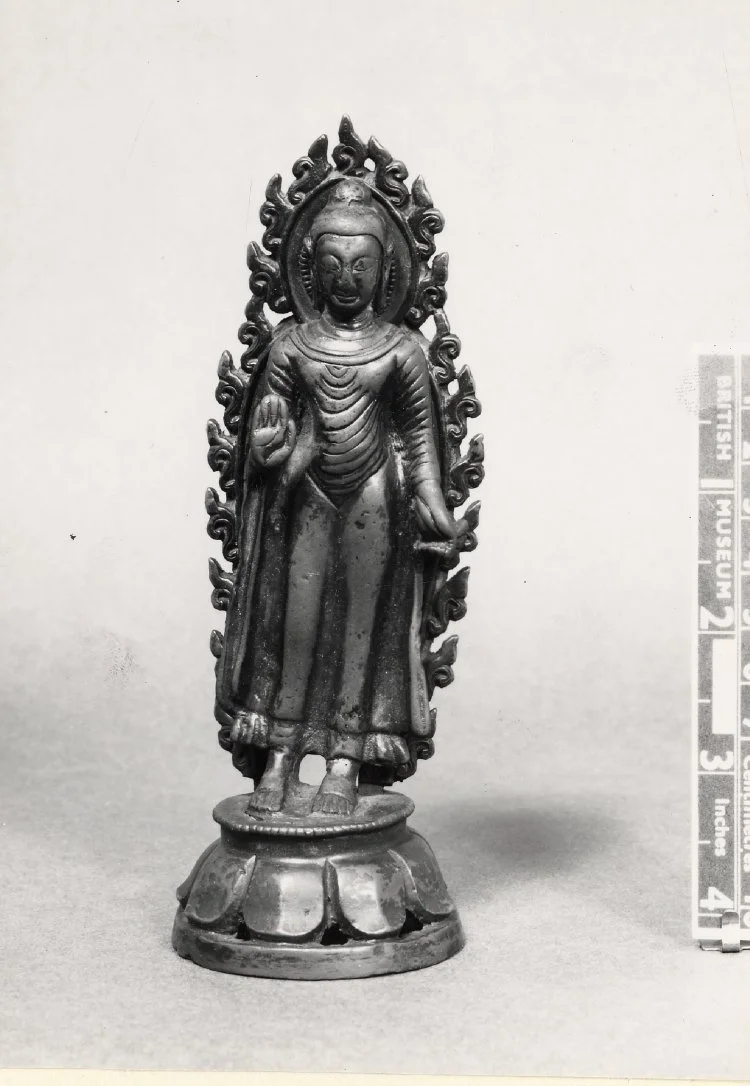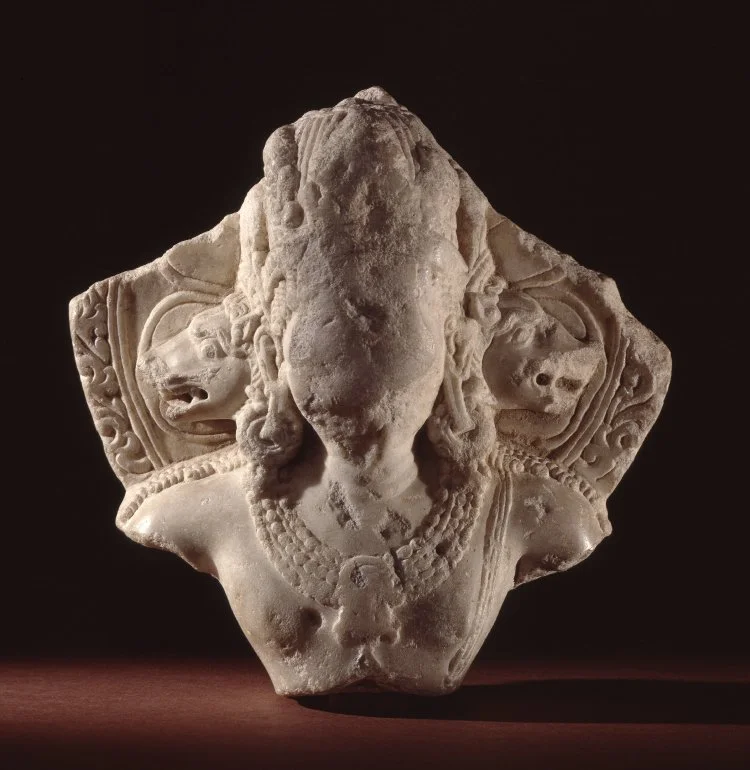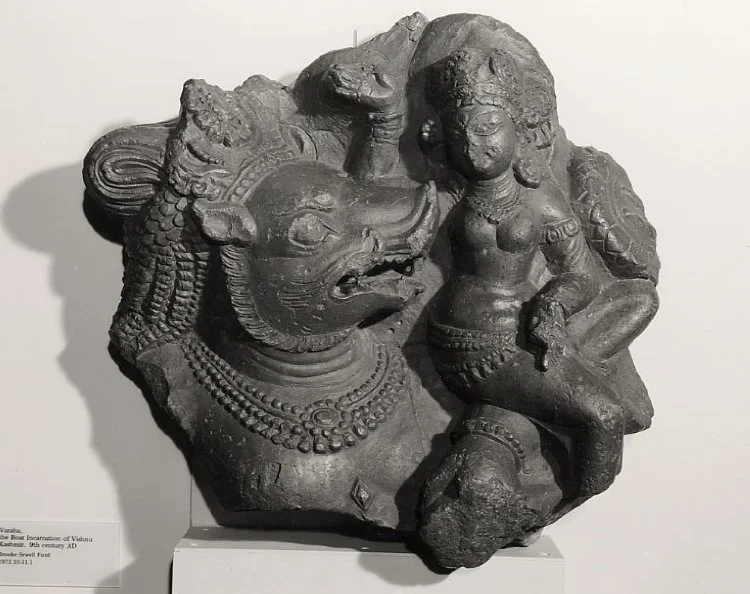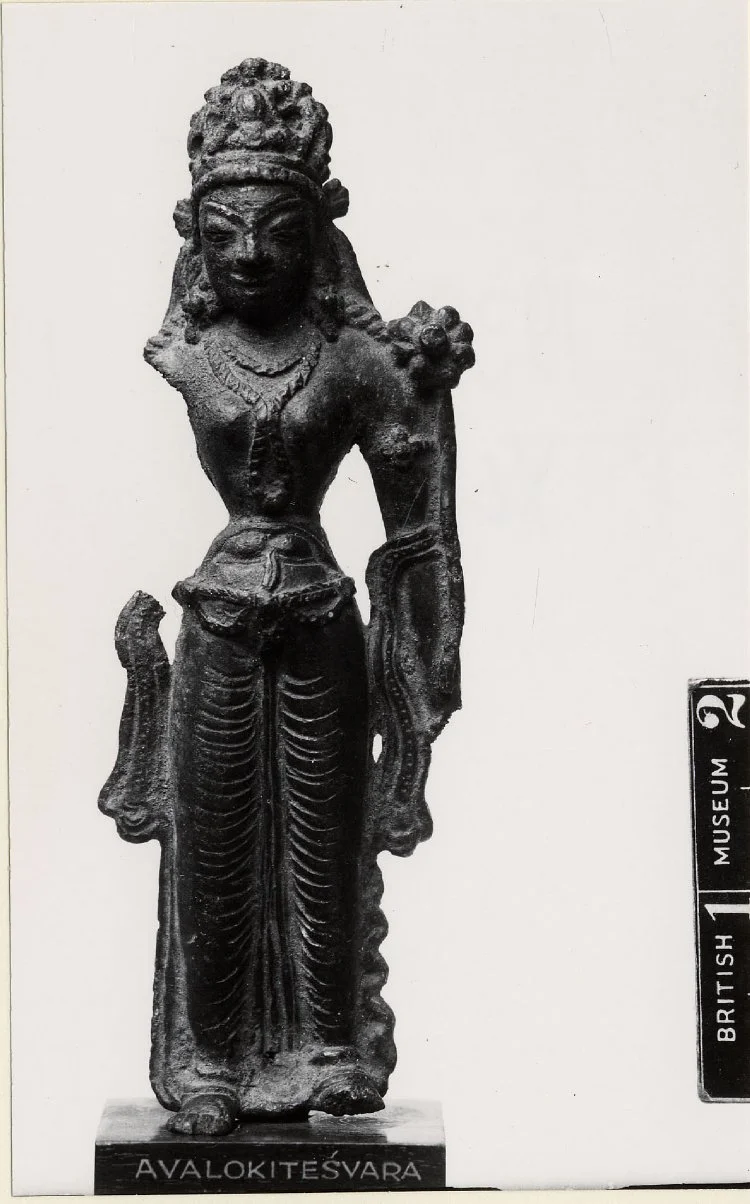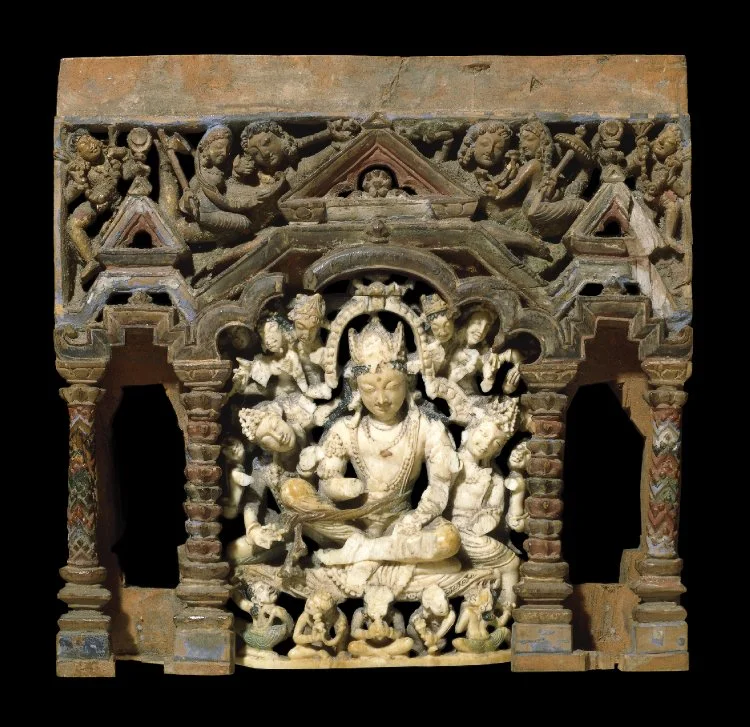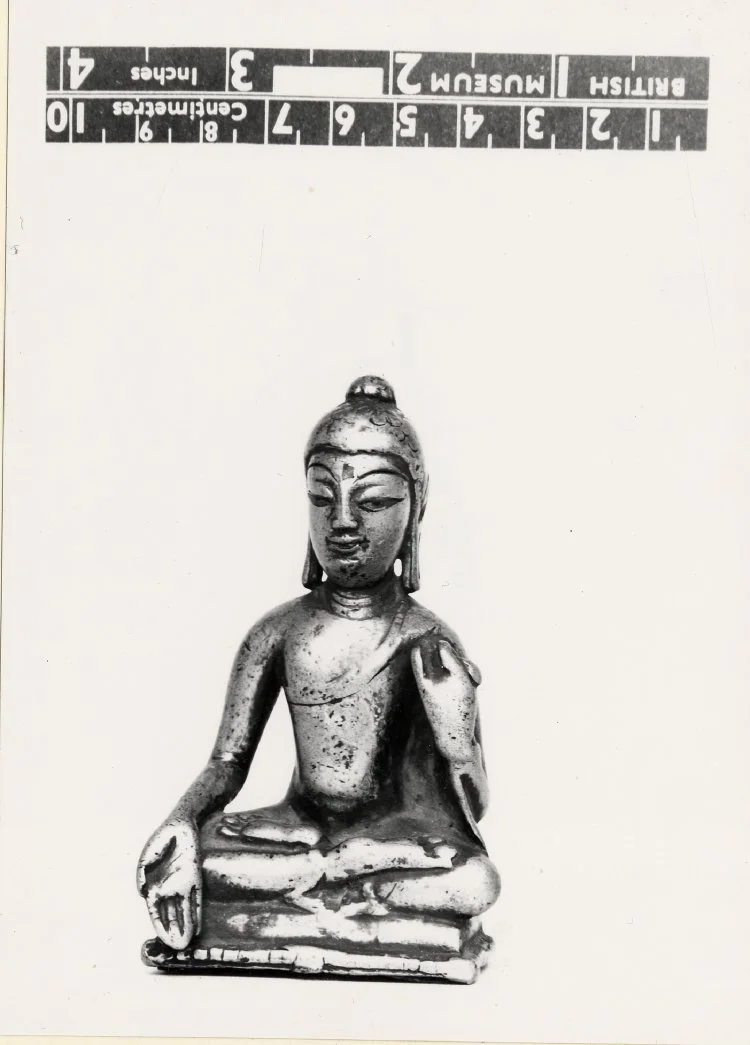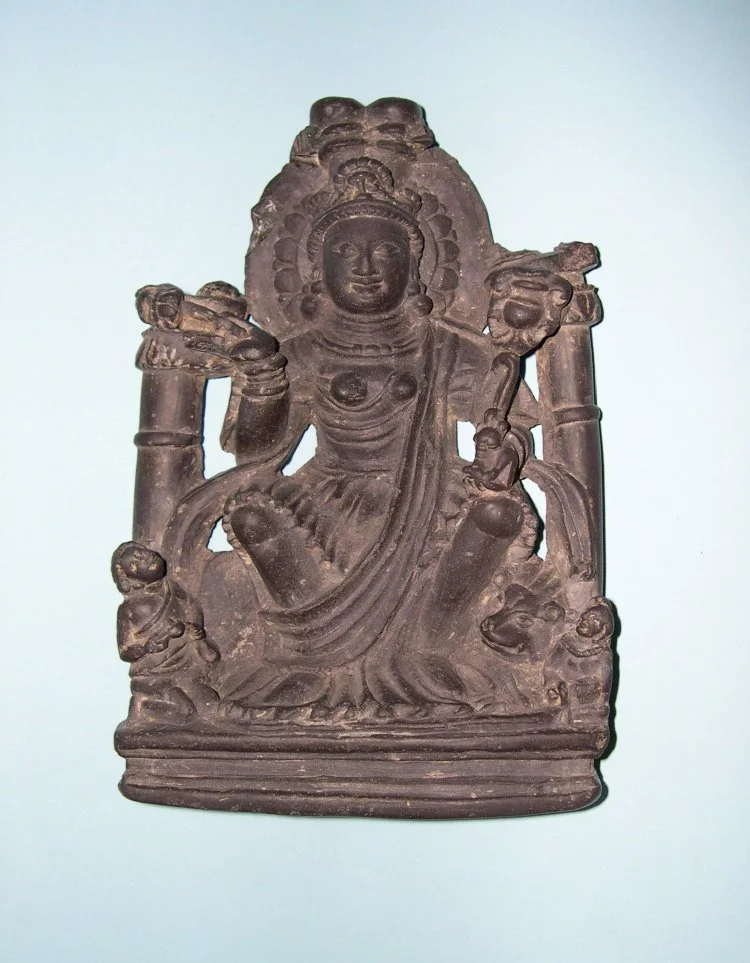Kashmir Collection at the British Museum Part II
Second Part of of the Kashmir Art and Antiquities on display at the British Museum. All pics and descriptions are from the British Museum website.
A figure of the Buddha seated in padmāsana, his hands folded on his lap in dhyānamudrā; cast in bronze with copper and silver inlay. 8th C
Despite its modest size this bronze has a monumental aspect with a fullness of face and body due to the influence of Gupta modelling absorbed by the art of Kashmir. While it resembles seated Buddhas in central and even eastern India on account of this common influence, its distinctively regional features appear in the shape of the head, the hairline and the upward tilt of the eyes. The copper inlay of the lips and silver in the eyes, like the flap of the robe hanging from the left shoulder, are Indian medieval characteristics; inlay became progressively commoner. The damage on the image may be due to casting faults.
Figure (Buddha). Standing on lotus. Made of bronze. 10th C - 11th C
Figure (Viṣṇu.fragment). With boar heads on shoulders,earring and necklace,worn. Made of marble (white). 9thC-10thC
Figure (Viṣṇu as Varaha). Made of stone (schist). 9th C
A bronze standing figure of Tara, missing proper right arm. 11th C - 13th C
A bronze standing figure of Tara, missing proper right arm. 11th C - 13th C
Part of a carved wooden Buddhist shrine (portable) with three niches: the central contains a figure of an ivory seated Bodhisattva flanked by many attendants. The left and right niches are are empty but probably contained standing figures of female attendants. 8th C
The empty niches on either side of the main figure held a pair of carved ivory female attendants now in the Cleveland Museum of Art.Zwalf 1985
This wooden panel, with one surviving seated Bodhisattva, probably belonged to a shrine imitating a Kashmiri temple which, even with a proportionately high superstructure, would have been readily portable. The Bodhisattva's crown, where a 'parent' Buddha might have been, is damaged and there is no other evidence to identify him. The flanking niches must also have contained acolytes. This form of Buddhist devotional object was a characteristic product of the Kashmir region.
Seated figure of the Buddha, with right hand in varadamudrā and left raised by the shoulder holding his garment end; cast in a copper alloy with silver inlay. Thin copper base plate; inscribed on the rear. 9th C - 11 th C
Standing figure of Vajrasattva, cast in a copper alloy, with a pointed halo, broken and repaired with straps and rivets. 15th C. Found in Tibet
Figure. Steatite stone figure of Gaja-Lakṣmī, seated on a lion. 7th C
Figure (Kārttikeya). Figure on a peacock holding a parrot. Made of carved and gilded agalmatolite. 8th C. Found in Khotan/ Yoktan
Part of an oval lid showing a women with a cup being held to her lips; carved in a grey steatite; broken. Hepthatilite 6th C
Originally labelled as possibly 8th-9th century, Ghose suggests an early 6th century date for this as part of a group of similar items in different collections



